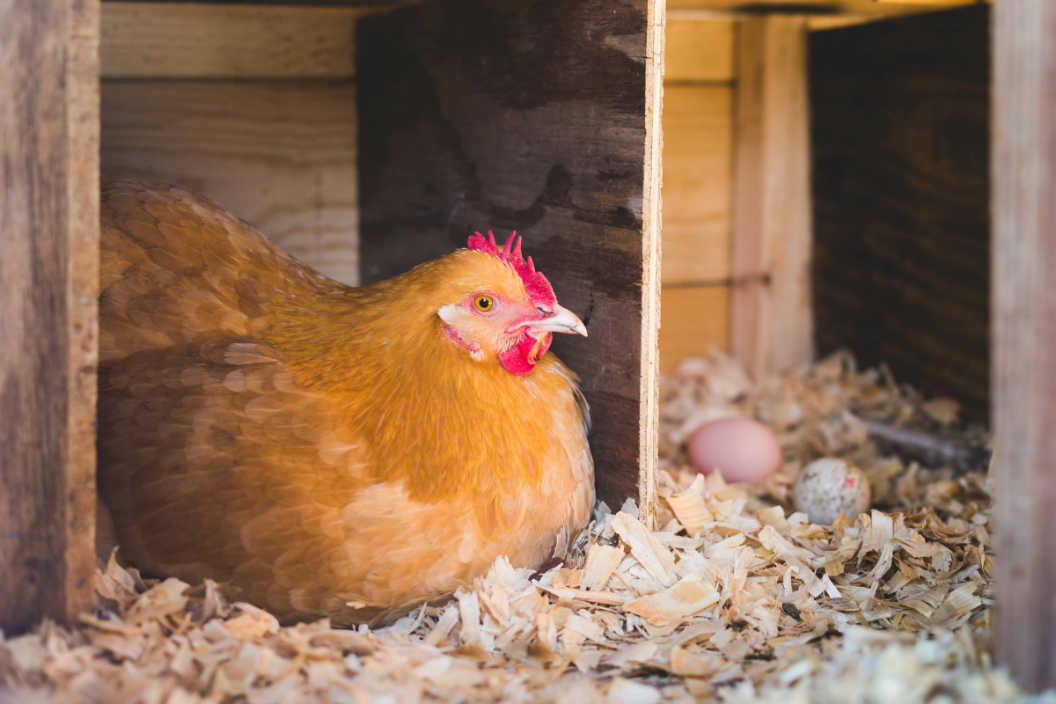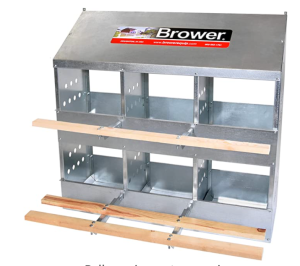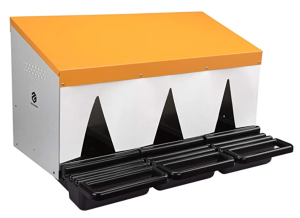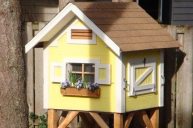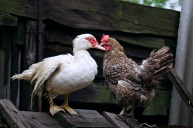Chicken nesting boxes round out your backyard chicken coop and make collecting eggs easier.
If you're raising backyard chickens, you've probably already selected a chicken coop and found the perfect chicken feed. But if your flock includes laying hens, you'll need to invest in some nesting boxes, too. These boxes make caring for your chickens easier and give your hens a safe place to lay eggs.
Luckily, you can buy or easily create your own nesting boxes, often out of materials that you probably have lying around the house. Here's what you need to know about creating nesting boxes for your flock.
Why Nesting Boxes Are Important
https://www.instagram.com/p/B2sDSZxH6zL/
Nesting boxes are essential supplies in keeping chickens. These boxes provide your chickens with safety, security, and privacy, encouraging them to lay eggs in the boxes rather than out in your yard or your coop. Gail Damerow, author of Storey's Guide to Raising Chickens, explains that a suitable nesting box needs to have some essential characteristics:
- Privacy and darkness - A nesting box that is dark and enclosed gives your hens privacy to lay their eggs. It discourages other hens from hanging out or entering the box.
- Roomy design - A hen should easily walk into and turn around in a nesting box. If a box is too narrow, hens may step on and break their eggs. Leghorns will do well in a box that measures 12"x12"x14". Larger, heavier breeds will need a larger box measuring 14"x14"x12". Bantams can use a smaller box just 10"x12"x10".
- Easy access - When introducing nesting boxes to hens, you'll need to place them on the coop floor. Then, you can gradually raise the boxes. Boxes positioned higher than 18" from the floor should have a ladder to help hens access the box.
Lisa Steele of Fresh Eggs Daily recommends using at least one nesting box for every three to four hens in your flock. Be ready, since the hens will ultimately find a favorite box that they'll all want to use, but be sure to give them enough boxes so that they're not overcrowded and have the option to use a different box if they choose.
Nesting Box Ideas
https://www.instagram.com/p/B1CL2zEnJ20/
When it comes to getting nesting boxes for your chicken coop, you'll have plenty of options. There are plenty of pre-made boxes that you can order online through places like Amazon. Many are designed for roosting and easy cleaning. Some even have drop-down slots to prevent broody hens from trying to sit on them all day.
Miller Single Chicken Nesting Box
?
Your egg-laying chickens will like this clean-keeping nesting box made of durable plastic so that it won't rust or rot. It mounts to the wall and has a sloped roof so that chickens can't roost on top of the box (and poop in or on it).
Brower 406B 6-Hole Poultry Nest
Chicken keepers will have an easy time installing this into their backyard chicken coop. The six holes have a 30 hen capacity. The bottoms are removable and washable, so you can clean them out quickly and replace the litter or sawdust. The galvanized steel chicken nest boxes have roosting bars for your chickens to hang out on. The removable trays also make egg collection more accessible.
Pentagades Laying Chicken Nesting Boxes 3 Hole
If you do not want your pullets to roost or have baby chicks, this may be the best chicken set up for your backyard coop. The tray is tilted, allowing eggs to roll out to a safe place after being laid. This way, you can keep them clean, avoid any egg-eating, and no more broken eggs. The handle makes it easy to pull out the rollaway drawer and collect your little egg harvest.
Nest Box Care
https://www.instagram.com/p/B02FspXHtir/
Getting and installing the nesting boxes is just the first part of the equation. Now you need to maintain them.
Start by adding plenty of nesting box material and padding to the bottom of the boxes. This material helps to cushion the eggs and can help to keep them from breaking. Lisa Steele recommends a variety of suitable padding materials such as straw, pine shavings, pine needles, shredded paper, and even dried leaves.
Some chickens will kick the material out of the nest boxes, so you may have more luck by cutting up a piece of rubber or a yoga mat and putting it in the bottom of the box. You can also buy nesting pads.
To get your chickens used to using the boxes, you may need to put fake eggs into the nest boxes, so the laying hens begin associating the boxes with laying eggs. These fake eggs can be golf balls, or you can buy ceramic nesting eggs that are a bit more realistic.
You'll need to clean out soiled or wet nesting material, especially before it gets moldy or smelly. Mites and lice can be an issue, but dusting the boxes and nesting material with food-grade Diatomaceous Earth can help to prevent them. You can also buy nesting box herbs that help to repel insects while making the boxes smell better.
Know someone who would like to add chickens to their flock? Tell us on our Wide Open Pets Facebook page.
This article was originally published October 4, 2019.
